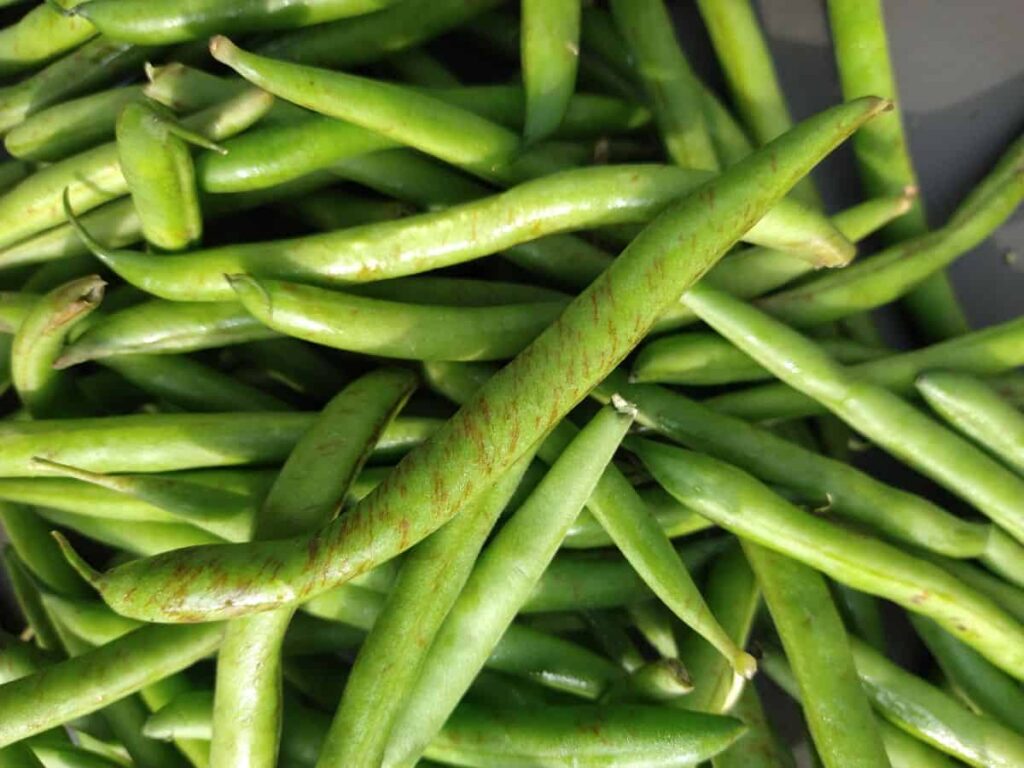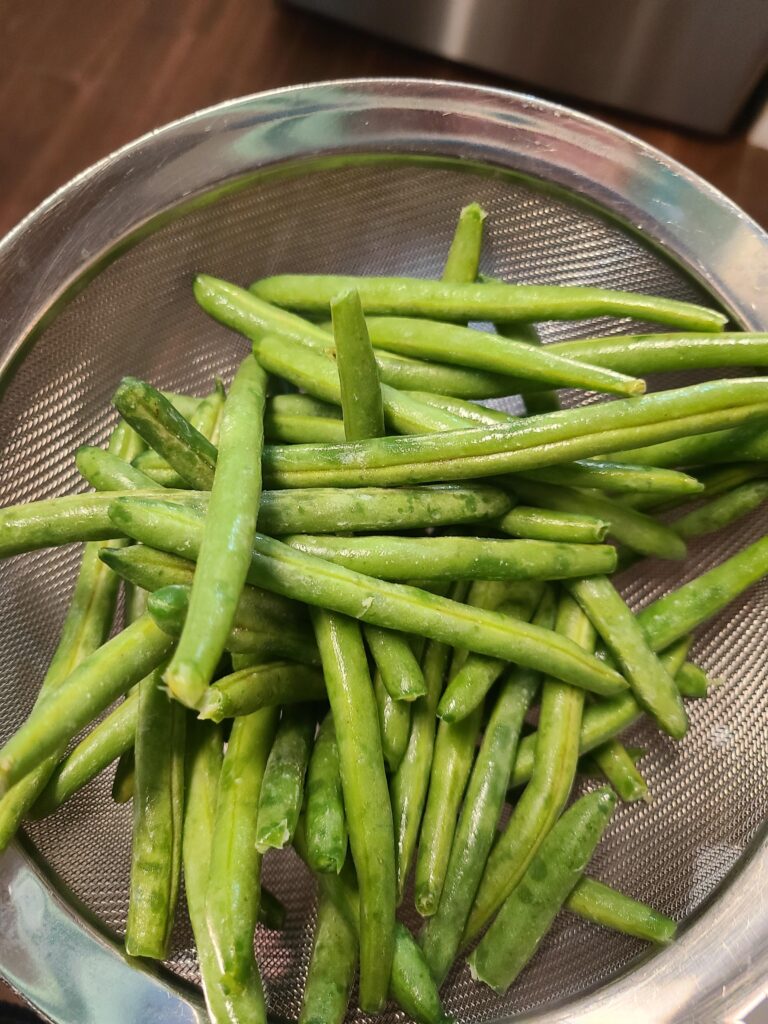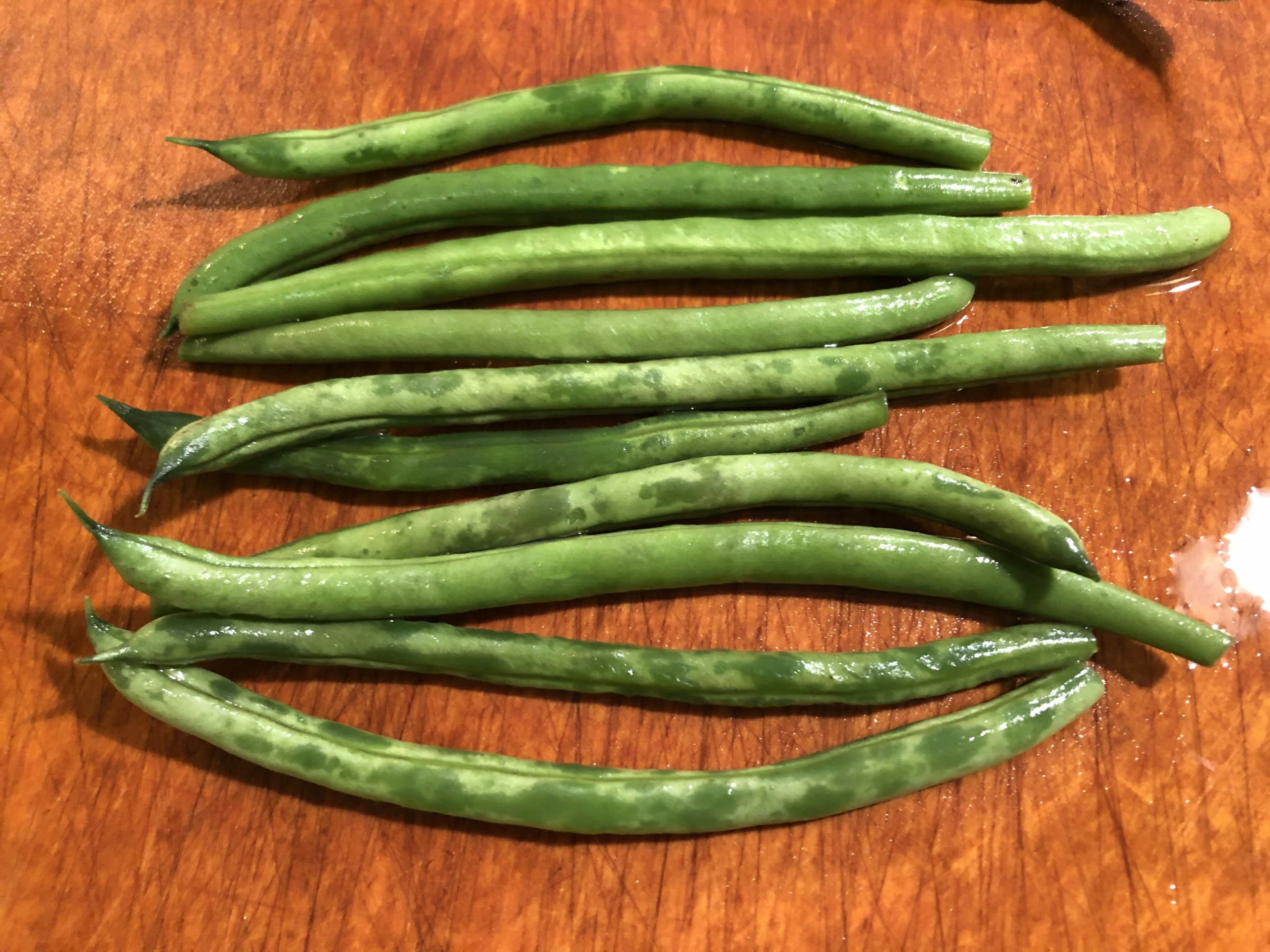So, you’ve got a bag of green beans in your fridge, but you can’t quite remember when you bought them. Now you’re left wondering if they’re still good to eat or if they’ve gone bad. We all know that slimy texture is a surefire sign of spoilage, but is that the only indicator? In this article, we’ll walk you through some simple methods to determine if your green beans have reached their expiry date, so you can avoid any unpleasant surprises when it comes to your next meal.

Visual Inspection
When it comes to determining the freshness of green beans, visual inspection is key. By taking a close look at the beans, you can quickly identify any signs of spoilage or deterioration. Here are some important things to consider during your visual inspection:
Check for Mold
Mold is a common indicator of spoilage in green beans. Inspect the beans carefully for any fuzzy or powdery substances, as these can be signs of mold growth. If you notice any moldy spots on the beans, it’s best to discard them immediately to avoid any potential health risks.
Look for Discoloration
Another visual clue to lookout for is discoloration. Fresh green beans should have a vibrant, bright green color. If you notice any brown or yellow patches on the beans, it may indicate that they are no longer fresh. Discolored beans can also have a different texture and taste, so it’s best to remove them from your batch.
Inspect for Wrinkling or Shrinking
Healthy green beans should be plump and firm. If you come across beans that appear wrinkled or have started to shrink, it’s a clear sign that they are past their prime. These beans are likely to have a dry and tough texture, making them less enjoyable to eat. It’s best to opt for beans that are still taut and not showing any signs of shrinkage.
Notice Slimy Texture
A slimy texture is a strong indicator that green beans have gone bad. When you touch the beans, they should feel crisp and slightly firm. However, if they feel slimy or slick to the touch, it’s a sign of spoilage. This sliminess can be caused by bacteria or other microorganisms that have started to grow on the beans, making them unsafe to consume.
Smell Test
Apart from visual inspection, your sense of smell can also be a valuable tool in determining the freshness of green beans. By taking a whiff of the beans, you can detect any unusual or unpleasant odors that may be indicative of spoilage.
Take a Whiff
When you bring the beans close to your nose and take a gentle sniff, fresh green beans should have a mild, earthy aroma. If you detect any musty or foul odors coming from the beans, it’s likely that they have started to spoil. Trust your sense of smell and avoid consuming beans with an off-putting smell.
Detect a Musty or Foul Odor
Spoiled green beans may emit a musty, damp, or rotten smell. This odor is often a result of the breakdown of organic matter within the beans. If you notice such odors, it’s best to play it safe and discard the beans. Consuming spoiled beans can lead to digestive issues and other health problems, so it’s important to rely on your sense of smell to make a judgment.

Touch and Feel
The texture of green beans can tell you a lot about their freshness. By touching and feeling the beans, you can determine whether they are still suitable for consumption or if they have started to spoil.
Feel the Texture
Fresh green beans should feel crisp and slightly firm to the touch. When you press your fingers against the beans, they should give a little resistance and bounce back. If the beans feel overly soft or mushy, it’s a clear indication that they are no longer fresh and should be discarded. The texture of green beans can greatly affect your cooking experience, so it’s important to choose beans that are still crisp and firm.
Avoid Sliminess
Similar to the visual inspection, sliminess is a texture to avoid when it comes to green beans. If the beans feel slimy or slick, it means that bacteria or other microorganisms have started to grow on them. This sliminess can affect the taste and safety of the beans, so it’s best to steer clear of them.
Check for Brittle or Soft Beans
While firmness is desired, extreme brittleness can also be a sign of spoilage in green beans. If the beans feel too brittle or if they easily break apart when touched, it’s likely that they have become dry and dehydrated. On the other hand, beans that are excessively soft may indicate that they have begun to deteriorate. Opt for beans that strike a balance between being firm and tender.
Snap Test
The snap test is a simple but effective method to assess the freshness and quality of green beans. By breaking a bean, you can determine if it meets the desired standards or if it has started to spoil.
Break a Bean
Choose a green bean from your batch and snap it in half. The act of breaking the bean not only reveals its internal structure but also allows you to assess its texture and moisture content.
Hear a Clean Snap
When you snap a fresh green bean, it should produce a clean, audible snap. This indicates that the bean is still fresh and has a good moisture content. The snap sound comes from the breaking of the cell walls within the bean. A clean snap is a positive sign that the beans are of good quality and will likely retain their desirable texture when cooked.
Experience a Bendy or Mushy Bean
On the other hand, if the green bean bends without snapping or if it feels mushy when you break it, it is likely past its prime. These beans may have lost their moisture content and can become overly soft and limp when cooked. To ensure the best culinary experience, it’s advisable to avoid using beans that do not snap cleanly.

Appearance
The appearance of green beans can provide valuable insights into their freshness and overall quality. By visually observing the beans, you can evaluate various aspects that contribute to their overall appearance.
Observe Shiny Beans
Fresh green beans should have a glossy or shiny appearance. This indicates that they are still hydrated and retain their natural moisture content. Shiny beans are a good visual indicator of freshness and are more likely to have a desirable texture when cooked.
Look for Uniform Color
A uniform color is another important aspect to consider when examining green beans. Fresh beans should have a consistent, vibrant green color throughout, with no visible discoloration. If you notice any beans that have darker or lighter patches, it could suggest uneven ripening or potential spoilage. It’s best to set aside such beans and opt for those with a uniform green hue.
Notice Consistent Shape and Size
Green beans should ideally have a consistent shape and size within the same batch. While minor variations are natural, significant differences in shape and size can be an indication of varying maturity levels or potential quality issues. Opt for beans that have a consistent appearance, as they are more likely to cook evenly and provide a visually appealing dish.
Rot or Decay
To ensure you are consuming fresh and safe green beans, it’s important to be on the lookout for signs of rot or decay. Rotting beans can pose health risks and can negatively impact the taste and texture of your dishes.
Examine for Decaying Spots
Inspect the beans closely for any signs of decay. If you notice small brown or black spots on the beans, it may indicate the presence of rot. These spots can spread quickly and affect the freshness of the entire bean. Ensure that you remove any beans with decaying spots to prevent the spread of spoilage to other beans.
Spot Dark or Soft Patches
In addition to visible spots, dark or soft patches on the beans are also indicators of decay. These patches can be a result of bacterial or fungal growth, which can lead to a loss of flavor and quality in the beans. If you notice any beans with dark or soft patches, it’s best to discard them and not take any chances with their safety.
Check for an Unpleasant Odor
Along with the visual examination, a foul or unpleasant odor can also accompany rot or decay in green beans. If you detect any strong or off-putting smells when inspecting the beans, it’s likely that spoilage has occurred. Trust your nose and refrain from consuming beans with an unpleasant odor, as they can cause digestive discomfort and other health issues.

Storage Conditions
The way green beans are stored can greatly affect their freshness and shelf life. Understanding the optimal storage conditions can help you maintain the quality of your beans for a longer period.
Evaluate Temperature
Green beans are best stored in a cool environment. A temperature range of 40-45°F (4-7°C) is ideal for preserving the freshness of the beans. If possible, store them in the refrigerator crisper drawer, which provides a slightly lower temperature than the rest of the fridge. Avoid storing green beans at room temperature, as this can accelerate the breakdown process and lead to spoilage.
Assess Humidity
While green beans thrive in a cooler environment, they also prefer a certain level of humidity. Aim for a humidity level of around 95% to prevent the beans from drying out. If your refrigerator has an adjustable humidity setting, try to set it to a higher level for the best preservation of the beans. Maintaining the right balance of temperature and humidity plays a crucial role in extending the shelf life of green beans.
Monitor Exposure to Air
To prevent premature spoilage, it’s important to limit the beans’ exposure to air. Oxygen can accelerate the degradation process, causing the beans to lose their freshness more quickly. Always store green beans in airtight containers or sealed plastic bags to minimize air exposure. This also helps prevent the transfer of odors from other foods in the refrigerator.
Purchase Fresh Beans
To ensure that you start with the freshest green beans possible, it’s important to make wise decisions when purchasing them. Here are some tips to keep in mind when selecting green beans:
Buy from Reliable Sources
Choose reputable stores or farmers markets when purchasing green beans. These establishments are more likely to prioritize the quality and freshness of their produce. Buying from trusted sources helps minimize the risk of purchasing spoiled or low-quality beans.
Choose Firm and Vibrant Green Beans
When selecting green beans, opt for those that are firm and vibrant green in color. Beans that feel soft or have a dull, faded appearance are likely past their prime. The level of firmness can greatly affect the beans’ texture and cooking results, so it’s important to choose beans that still possess that desirable crispness.
Inspect Packaging for Damage or Dirt
Check the packaging of the green beans before purchasing. Ensure that it is intact and free from any signs of damage, such as tears or holes. Contaminated packaging can lead to a higher risk of spoilage. Additionally, inspect the beans within the packaging for any signs of dirt or insect infestations. Choose beans that appear clean and free from any visible contaminants.

Expiration Date
It’s always advisable to check the expiration date on the packaging of green beans. While the date may vary depending on the source and storage conditions, it serves as a guide to help you determine the freshness and shelf life of the beans.
Refer to the Label
Carefully read the label on the packaging to find the expiration date or the “best before” date. This date provides information on how long the beans are expected to retain their quality when stored properly. If the beans have exceeded the expiration date, it’s best to discard them to avoid any potential health risks.
Check for Best Before Date
The “best before” date indicates the period during which the beans are expected to be at their freshest and of the highest quality. While the beans may still be safe to consume after this date, their taste, texture, and nutritional profile may begin to decline. It’s generally recommended to consume the beans before the “best before” date for the best culinary experience.
Storage Guidelines
Even after purchasing fresh green beans, proper storage is crucial to ensure their longevity and quality. Follow these storage guidelines to maximize the shelf life of your beans:
Properly Store in Refrigerator
After bringing the green beans home, place them in the refrigerator as soon as possible. Transfer them to a perforated or unsealed plastic bag to maintain airflow while minimizing moisture loss. Alternatively, you can store the beans in the refrigerator crisper drawer, where they will be protected from excessive cold air and maintain a suitable level of humidity.
Use Airtight Containers or Bags
To prevent air exposure and maintain the beans’ freshness, store them in airtight containers or sealed plastic bags. Ensure that the containers or bags are clean and free from any lingering odors. This helps to preserve the beans’ natural flavor and texture while minimizing the risk of contamination.
Avoid Storing with Ethylene-Producing Fruits
Ethylene is a plant hormone that accelerates the ripening and decay process in fruits and vegetables. To prevent premature spoilage, it’s best to store green beans away from ethylene-producing fruits such as apples, bananas, or tomatoes. Keeping the beans separate from these fruits can help extend their shelf life and maintain their desirable quality.
In conclusion, determining the freshness of green beans involves a combination of visual inspection, smell test, touch and feel assessment, snap test, and overall observation. By following these guidelines and paying close attention to the beans’ appearance, texture, and aroma, you can ensure that only the freshest and safest green beans make their way into your meals. Remember to store them properly, purchase from reliable sources, and check for any signs of spoilage or deterioration. With these tips in mind, you can confidently enjoy delicious and nutritious green bean dishes every time.



